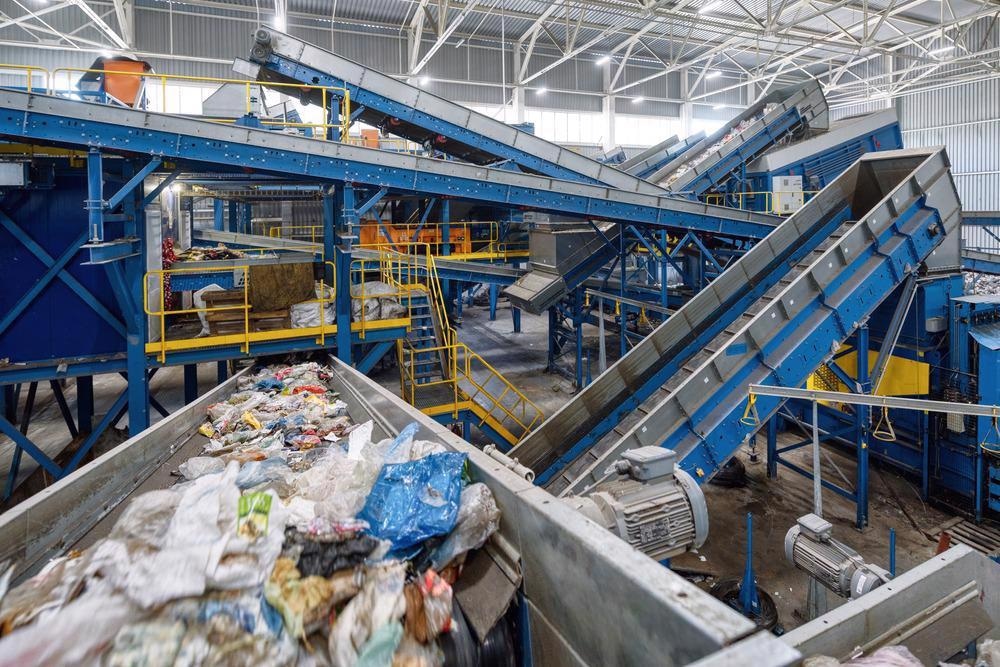
Image Credit: Nordroden/Shutterstock.com
The Ellen MacArthur Foundation HolyGrail project, part of its New Plastics Economy program, might have found the answer to packaging waste sorting for the circular economy.
Research from the first phase of the project identified chemical tracing and digital watermarking as being among the most promising waste sorting technologies that could provide high-quality recycling rates for post-consumer waste that the circular economy of the future needs.
The second phase of HolyGrail is gaining commitments to adopt these tagging approaches from some of the biggest manufacturing names. The European Brands Association now investigates how digital watermarking could help them close the loop on the future circular economy.
Can Tagging Close the Loop on the Circular Economy?
The HolyGrail project considered two waste sorting technologies that tagged packaging and other disposable items with a code that machines could read at the packaging waste sorting facility to enable faster and more accurate sorting.
Chemical tracing and digital watermarking can make automatic waste sorting technology work much more quickly and accurately. If machines like this work more efficiently, more recycling and reusing can be possible.
To dramatically speed up the packaging waste sorting process – and, crucially improve efficiency to reduce the amount of unrecycled waste – tagged codes could include information such as:
- The product’s SKU identifier
- The packaging material or materials present
- Color, size, weight, and other physical attributes of the material
- Packaging contents, such as food or cleaning products
- Information about the manufacturer, origin, imports, and the date and location of the product’s sale
The ability to automatically detect this data at packaging waste sorting and recycling facilities could also lead to more high-quality recycling rates and improve our overall impact on the environment from waste materials.
With the Internet of Things (IoT) linking up sales points with factory production lines and logistics operations, it only makes sense to include post-consumer waste in its talking and learning online network.
Manufacturers will be able to clearly understand where their waste goes and how much is recycled. With this information, they can find new ways to reduce the amount of waste left by using their products and ensure they are recycled as much and as often as possible.
How Does Tagging Work?
The HolyGrail project looked into two tagging waste sorting technology proposals that could drive high-quality recycling rates and lead us closer to the circular economy: chemical tracing and digital watermarking.
Chemical Tracing
Chemical tracing encodes information into the plastic resin of the product or packaging by inserting single molecules, which refer to items in a product tagging code.
Machines can read this code at the packaging waste sorting facility. The sensors can detect whether a molecule is present in the resin due to the molecule's spectroscopic properties (light wavelengths that it shows up under).
Molecules are injected into the resin to form a binary code, linking the scanning technology to a database of information about the product.
The benefit of the chemical tracing method is that it still works if the packaging has been broken or deformed.
Digital Watermarking
Digital watermarking prints a QR-style code directly onto the packaging's surface, usually in a tile across the whole product. The code can also be embossed or pressed into the material.
Image sensors at the packaging waste sorting facility identify the code and inform the waste sorting technology what to do with each piece of waste.
These tagged codes could also include any information that would be useful to record. More creative ways of using waste collection as a data collection source could become profitable or beneficial to society in the future.
Next Steps for the HolyGrail Project
The first phase of the Ellen MacArthur Foundation’s HolyGrail Project identified waste sorting technologies that could bring us much closer to realizing the potential of a fully circular economy. According to the latest figures, only 30% of plastic waste in Europe is recycled. This is primarily due to inadequate waste sorting technology.
The success of the next and any subsequent phases of the projects rests in the manufacturers' hands of most of the world’s packaging and waste. The logistics, retail, and waste and recycling industries combine with manufacturing to make up the plastic value chain.
In a recent breakthrough for the project, the European Manufacturers Foundation (AMI) has committed to finding out how it can implement digital watermarking across its members’ operations in Europe.
With more manufacturers coming on board in the future, digital watermarking and other waste sorting technology upgrades could soon be bringing about the circular economy that our environment needs.
References and Further Reading
GS1 (2020) HolyGrail 2.0: Pioneering Digital Watermarks for Smart Packaging Recycling in the EU. GS1.eu.
New Plastics Economy (2020) HolyGrail: Tagging Packaging for Accurate Sorting and High-Quality Recycling. Ellen MacArthur Foundation. [Online] https://www.newplasticseconomy.org/assets/doc/Holy-Grail.pdf
Pilkington, B (2020) The Future of Chemical Recycling to Turn Plastic into Virgin-Quality Materials. AZO Materials [Online] https://www.azom.com/article.aspx?ArticleID=19986
Disclaimer: The views expressed here are those of the author expressed in their private capacity and do not necessarily represent the views of AZoM.com Limited T/A AZoNetwork the owner and operator of this website. This disclaimer forms part of the Terms and conditions of use of this website.